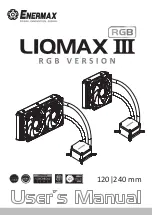
13
13-10
Ver.0.10
By using the same ID and setting the same value in mask registers for the two slots, the
possibility of a message-lost trouble when, for example, receiving frames which have many
IDs can be reduced.
•
Procedure for entering BasicCAN mode
Follow the procedure below during initialization:
➀
Set the IDs for slots 14 and 15 and local mask registers A and B. (We recommend
setting the same value.)
➁
Set the frame types handled by slots 14 and 15 (standard or extended) in the CAN
Extended ID Register. (We recommend setting the same type.)
➂
Set the Message Slot Control Register for slots 14 and 15 to for data frame reception.
➃
Set the BCM bit to 1.
Note 1:Do not change settings of BCM bit when CAN is operating (CAN Status Register CRS bit
= 0).
Note 2:The first slot that is active after clearing the RST bit is slot 14.
Note 3:Even during BasicCAN mode, slots 0 to 13 can be used as in normal operation.
(6) LBM (Loopback Mode) bit (D14)
When the LBM bit is set to 1, if a receive slot exists whose ID matches that of the frame sent by
the CAN module itself, then the frame can be received.
Note 1:No ACK is returned for the transmit frame.
Note 2:Do not change settings of LBM bit when CAN is operating (CAN Status Register CRS bit
= 0).
(7) RST (CAN Reset) bit (D15)
When the RST bit is cleared to 0, the CAN module is connected to the CAN bus and becomes
possible to communicate after detecting 11 consecutive recessive bits. Also, the CAN Time
Stamp Count Register thereby starts counting.
When the RST bit is set to 1, the CAN module is reset so that after sending a frame from the slot
which has had a transmit request set, the protocol control unit is reset and the CAN module is
disconnected from the CAN bus. Frames received during this time are processed normally.
Note 1:It is inhibited to set a new transmit request for a while from when the CAN Status
Register CRS bit is set to 1 after setting the RST bit to 1 till when the protocol control unit
is reset.
Note 2:When the protocol control unit is reset by setting the RST bit to 1, the CAN Time Stamp
Count Register and CAN Transmit/Receive Error Count Registers are initialized to 0.
Note 3:To restart CAN communication, the FRST and RST bits must be cleared to 0.
CAN MODULE
13.2 CAN Module Related Registers
Summary of Contents for M32170F3VFP
Page 42: ...1 1 24 Ver 0 10 OVERVIEW 1 4 Pin Layout This is a blank page ...
Page 56: ...2 2 14 Ver 0 10 This is a blank page ...
Page 88: ...3 3 32 Ver 0 10 ADDRESS SPACE 3 7 Notes on Address Space This is a blank page ...
Page 270: ...9 9 40 Ver 0 10 DMAC 9 4 Precautions about the DMAC This is a blank page ...
Page 614: ...12 12 64 Ver 0 10 This is a blank page SERIAL I O 12 9 Precautions on Using UART Mode ...
Page 756: ...17 17 10 Ver 0 10 RAM BACKUP MODE 17 4 Exiting RAM Backup Mode Wakeup This is a blank page ...
Page 762: ...18 18 6 Ver 0 10 OSCILLATION CIRCUIT 18 2 Clock Generator Circuit This is a blank page ...
Page 831: ...CHAPTER 22 CHAPTER 22 TYPICAL CHARACTERISTICS 22 1 A D Conversion Characteristics ...
Page 833: ...Appendix 1 1 Dimensional Outline Drawing APPENDIX 1 APPENDIX 1 MECHANICAL SPECIFICATIONS ...
Page 841: ...Appendix 3 1 Precautions about Noise APPENDIX 3 APPENDIX 3 PRECAUTIONS ABOUT NOISE ...















































